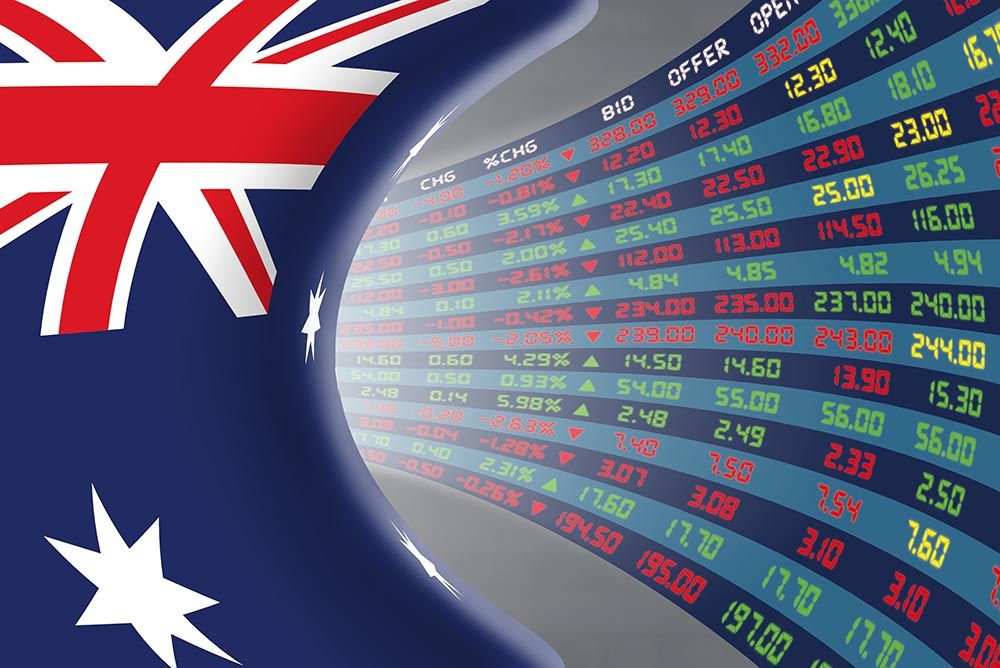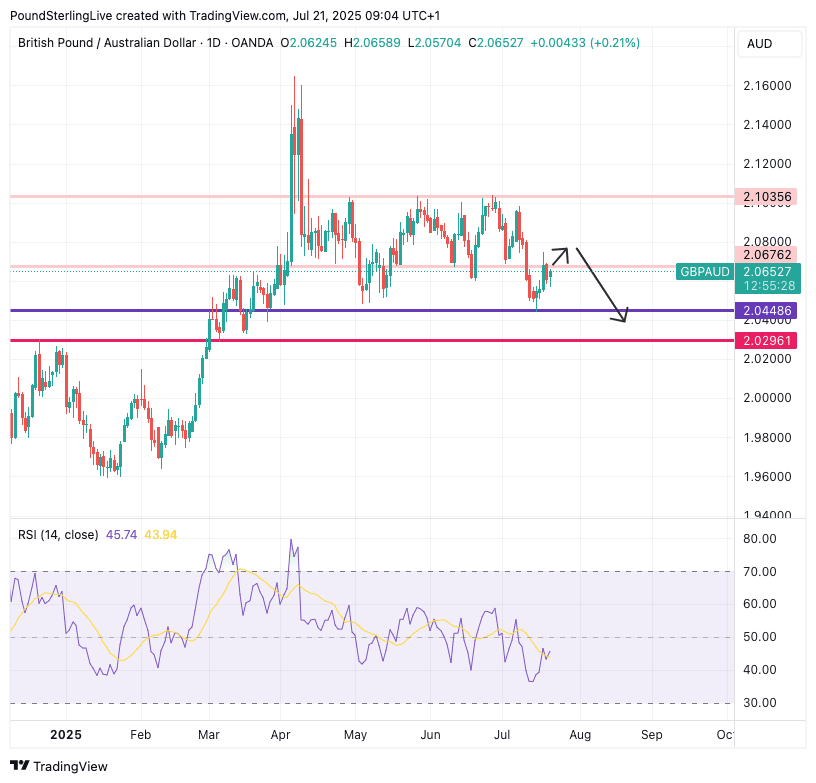
Image © Adobe Images
The Pound is forecast to extend a little higher against the Australian Dollar in the coming days.
However, strength is likely to be short-lived as the Pound to Australian Dollar exchange rate (GBP/AUD) is trading heavily as global trade war fears continue to lose their grip on the market narrative.
The brief recovery we look for (in the period covering the coming hours and one-to-two days) would represent nothing more than an uptick in the 'random walk' that GBP/AUD follows between the clearly defined range boundaries:
Above: GBP/AUD at daily intervals.
Last week, the pair rebounded from support at 2.0485, as one would expect from a technically driven market, and the near-term recovery could go as high as 2.08 before turning south again.
Big picture (for the coming weeks) is therefore that 2.0328 will more likely be tested than 2.1035.
For the Australian Dollar to lose meaningful altitude, we would need global investor sentiment to take a knock. A potential catalyst for such an outcome would be U.S. President Donald Trump losing patience with the EU and Japan and forcing high tariffs on the two partners.
The coming week should be dominated by headlines regarding any trade accords that must be struck ahead of Trump's August 01 deadline.
However, even if tariff tensions flare again, we note that markets have taken a far more sanguine approach to the matter relative to April. It was back in April that AUD tanked as the details of Trump's 'Liberation Day' tariffs became known, a repeat of this weakness is unlikely.
For starters, the August 01 deadline would likely be extended in the event that negotiations require some more time.
With markets tuning out of tariffs, the continued melt-up in global equities looks set to continue, implying the kind of supportive mood music that the Aussie Dollar so enjoys will persist.
"The S&P 500 continued to rise this week amid a solid start to the 2Q earnings season. With 59 companies having reported 2Q results, 61% of firms have beaten consensus earnings by more than a standard deviation of estimates, above the historical average of 48%. We forecast the S&P 500 will rise by 10% to 6900 during the next 12 months," says David J. Kostin, an analyst at Goldman Sachs.
Under such a scenario, the odds of more persistent GBP/AUD weakness will strengthen.

